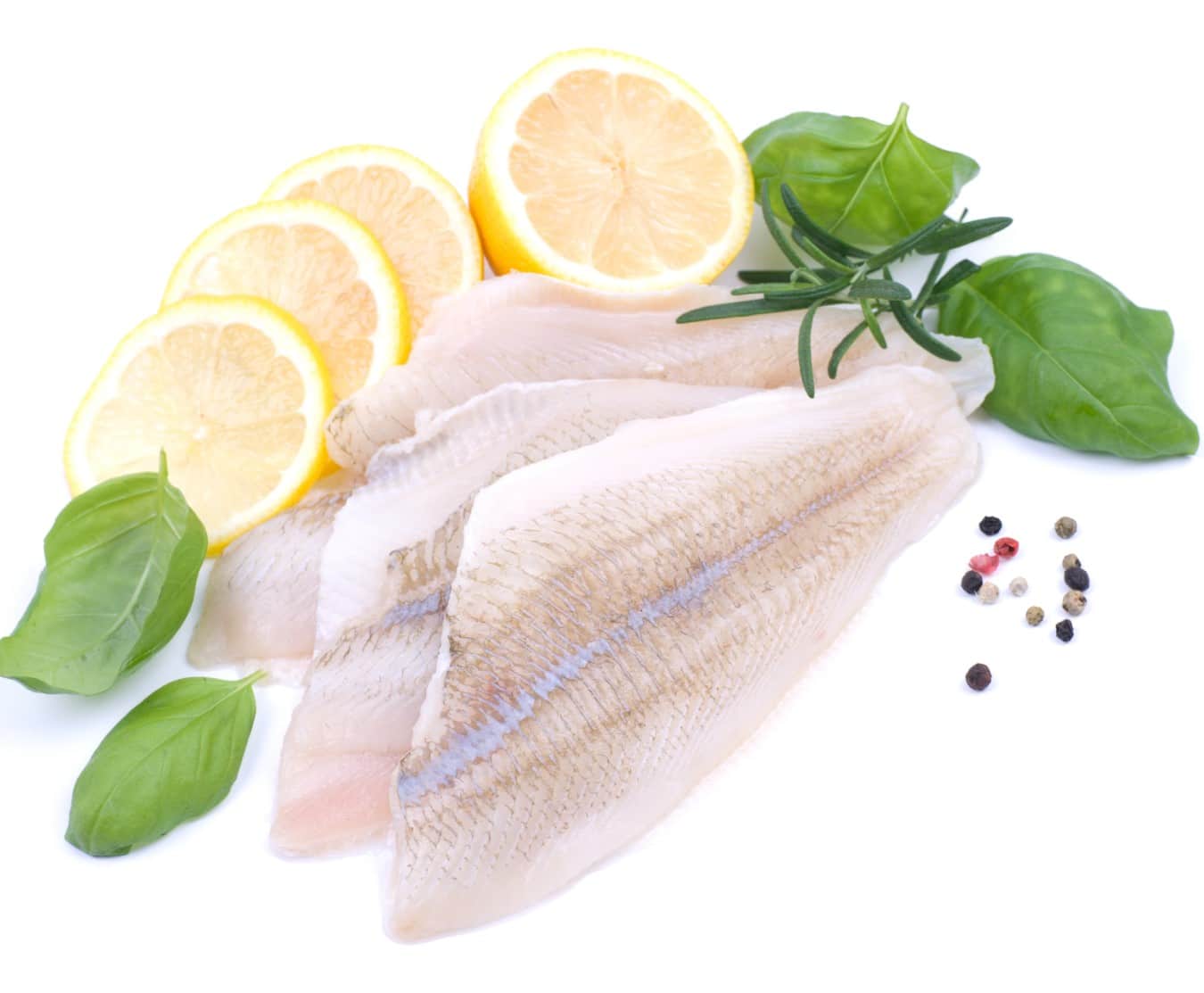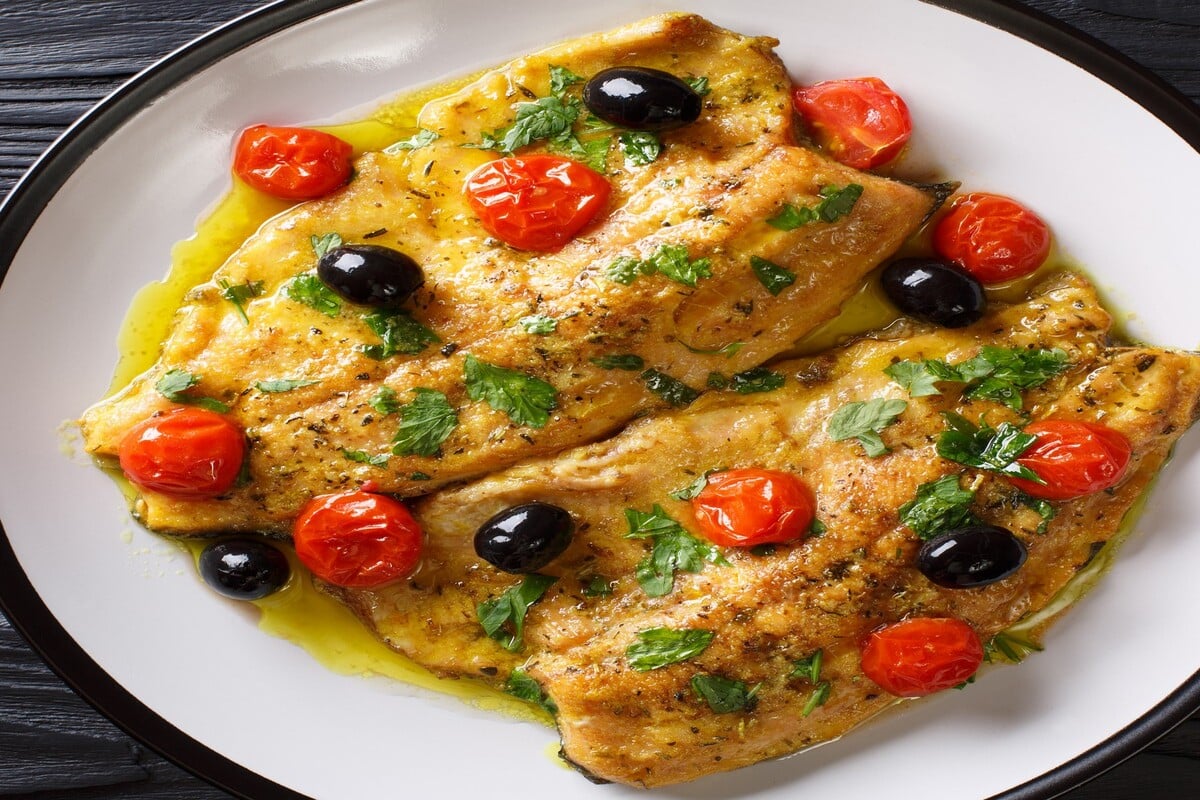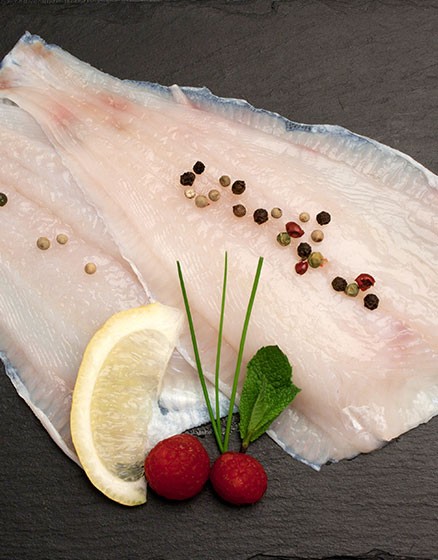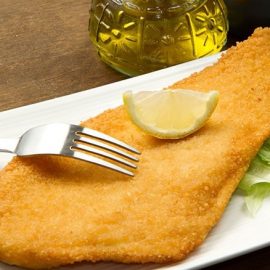
Introduction- Plaice, An Ancient Source of Nutrition
Plaice (Pleuronectes platessa) is a flatfish species commonly found in the North Sea. It has been a popular food source since prehistory, with evidence of its use in Europe extending back to medieval times.
The species is highly prized for its delicate flavour, flaky white flesh, and high nutritional value, and has been a part of historic multi-course meals, as well as the traditional British dish Fish and Chips.
Plaice Popular in North America and Beyond
In recent years, there has been an increased interest in plaice due to its sustainability and high omega-3 content. This has led to the reintroduction of plaice to North America, which is now widely farmed in countries such as the United States, Europe, China, and Japan for commercial consumption.
Plaice has been a staple food in Europe for centuries, but it is now subject to regulated fishing practices to sustain the species. It continues to be a popular food choice due to its flavour, nutrition, and sustainability, making it an essential item in fish markets and supermarkets worldwide.
Physical Characteristics
Plaice is an edible, demersal flatfish found in temperate waters of the North Atlantic Ocean and the Mediterranean Sea. Easily recognisable by its large, oval-shaped body and distinctive, flag-like pattern. The fish has a mottled, reddish-brown to reddish-green upper side and an off-white underside dotted with orange spots.
Their skin’s texture is smooth, adorned with 4 to 6 pairs of short barbels at their snout. Their fins are primarily translucent or nearly colourless, with a tan, yellowish or brownish tint, depending on the fish’s habitat.
Their scales are small and arranged in concentric rows, and the body abounds with pearly white spots of up to 10 cm in size. The dorsal fins are spiny, whilst their ventral and caudal fins have red or brown colours with yellow or white stripes.
Plaice can reach a length of up to 80 cm and is prized for its firm, white flesh and mild, sweet taste, making it a popular choice for use in many recipes.

Habitat
The depth at which plaice live varies from 15 to 500 meters, inhabiting both shallow coastal inlets and deeper marine areas. It prefers to stay near sandy, gravelly and rocky bottom structures, such as reefs and beds, where it can find food more efficiently.
Furthermore, plaice inhabits waters with an average temperature of 6 14 °C. Juveniles are usually found closer to shore, in muddy or sandy sediment areas, while larger adults seek out more challenging substrates such as pebbles and shells.
Farming and Sustaining Plaice
Plaice can be farmed in a variety of environments, including offshore, coastal, and land-based grows. The farming of Plaice has remained relatively uncontroversial, and it is a widespread species for aquaculture due to its hardiness and few requirements.
The sustainability of Plaice is ensured by responsible fisheries management, careful harvesting and farming, and protecting habitats and natural resources. The Monterey Bay Aquarium Seafood Watch lists wild-caught Plaice from Europe as the best choice for sustainable plaice.
Population and Conservation
To ensure the sustainability of Plaice stocks, governments are taking steps to conserve Plaice and their habitats. Among these measures are reducing fishing efforts, protecting Plaice spawning grounds, and limiting access to certain areas. In addition, many governments have implemented conservation plans to promote the sustainable management of Plaice populations.
Conservation Status
Unfortunately, overfishing in certain areas has led to local population declines of the plaice fish. Implementing numerous international regulations and quotas to protect the species has been necessary.
For example, the North-East Atlantic Fisheries Commission (NEAFC) has put in place several resource management measures to achieve sustainable catches and long-term population levels.
Distribution of Stocks
Plaice are abundantly found in the northern portions of the world, with the North Sea boasting a vast abundance. The distribution of Plaice is particularly abundant in Skagerrak, the Baltic Sea, the North-east Atlantic Ocean and the Mediterranean Sea.
Sustainable Fishing Practices
There are several methods used for harvesting plaice. The most common are traditional trawling, which involves significant netting dragging along the seafloor. This method has been criticised for damaging reefs and the seafloor.
As a means of reducing these environmental impacts, mid-water trawling has become more popular as it has lower fuel requirements and is considered more sustainable than bottom trawling.
The newer beam trawling method is even more sustainable, as it involves a trawl beam with electric lamps, attracting fish to the beam and making them easier to catch.
Plaice can also be targeted with other fishing practices, such as fishing with a rod and line, which is popular among recreational anglers. Gill nets, trammel nets, seine nets, and dredging can also be used; though these methods are considered less damaging to the environment, they are also more costly and labour-intensive.
Plaice’s Diet
Plaice are carnivorous bottom-feeders, usually foraging for bivalves and worms. They also consume smaller fish, crustaceans and other small animals in their environment as omnivores, consuming algae, plankton and other debris on the ocean floor.
Plaice are particularly fond of amphipods, worms, brittle stars, and other small crustaceans. In captivity, they feed on various types of fish food, like pellets or other feed, provided the water conditions are adequate and the food source is biodegradable.
They tend to feed in schools during the day when visibility improves and at night when predators are more active.
Life Cycle of Plaice
The life cycle of Plaice consists of four main stages: egg, larvae, juvenile and adult. The eggs of Plaice are very tiny and float in the water. They hatch after 6-7 days, and the larvae enter the planktonic stage, feeding on small invertebrates and other particles in the water. After 2-3 months in the planktonic stage, the larvae transform into juveniles and settle on the seabed.
Juveniles develop the classic angelfish-like shape and feed on benthic organisms like worms and crustaceans. During this phase, the growth rate of Plaice starts to increase significantly, and the fish reach maturity at 3-4 years of age, depending on water temperature. At this time, adult Plaice begin to reproduce and lay eggs. The average lifespan of Plaice is 12-14 years, with some individuals living up to 20 years in optimal conditions.

Reproduction
Plaice is a “moderately fast-growing” species characterized by relatively low metabolic rates compared to other flatfish species. Additionally, it is generally ectothermic and has temperature-dependent metabolic processes, making it especially vulnerable to climate change. It has a unique reproductive cycle and spawning behaviour, typically in large groups during spring and early summer.
Males are generally larger than females and may exhibit competitive fanning behaviour before spawning.
Economic Significance
Plaice is an essential economic species for commercial fishing, often appearing on the menu of restaurants, seafood markets, and seafood counters. Due to their monetary value, plaice fisheries are highly regulated by the United Nations Food and Agriculture Organization (FAO). The FAO requires that plaice is only acquired in legal fishing and that the landed catches are all documented and regulated.
Culinary Uses
The plaice is an important species in commercial, recreational, and traditional fisheries worldwide. It is highly valued for its delicate flavour and flaky white flesh, making it suitable for various culinary dishes.
Plaice can be sold in filleted or breaded forms and is popularly used in smoked, fried or boiled dishes.
Popularity and Availability
As a lean, white-fleshed fish, it is seen as a healthier alternative to other types of meat. Plaice fish is a popular seafood choice, and in parts of the United States, you may hear it referred to as flounder or Dover sole.
Nutritional Values
Plaice is a rich source of vitamins and minerals, such as Vitamin A, Vitamin B2, Vitamin B6, Vitamin B12, Vitamin D, and Vitamin E. It is also a source of other vital nutrients like phosphorus, zinc, and selenium.
Plaice is naturally low in sodium and virtually fat-free, containing only 1.1 grams of fat per 100 grams. Additionally, plaice is rich in omega-3 fatty acids, supplying 57.3 milligrams per 100 grams.
It is an excellent source of high-quality protein, containing between 12 and 14 percent protein by weight.
Cooking Plaice
Plaice’s most popular cooking methods are grilling, frying, poaching, baking, and steaming.
Plaice can also be cooked in the oven with a drizzle of olive oil, a pinch of salt and pepper, and some lemon slices. A minimal amount of oil or butter should be added to the pan to avoid sticking.
Plaice is also delicious when cooked in butter in a pan, taking 1-2 minutes on each side. The Plaice fillets should be poached in a shallow pan of boiling water for 5-10 minutes.
Alternatively, Plaice can be steamed in a steamer basket over boiling water, then covered with a lid and left to steam for 5-10 minutes.
Taste and Texture
Plaice has a mild, sweet flavour, slightly less rich than sole, flounder and turbot. Its flesh is firmer than other flatfish species, making it an ideal fish for grilling and baking.
Plaice can also be fried or breaded for delicious results, although cod and haddock are generally better suited for this technique. Furthermore, plaice can be cured through salting and smoking, while other flatfish species cannot be cured due to their delicate nature.
Preparation
Plaice is usually cooked as fillets, which can either be fried or grilled. Fried plaice is a traditional dish in Britain and Denmark, served with chips and tartar sauce. You can enjoy grilled plaice with side dishes such as mashed potatoes, rice, asparagus, and vegetables. It can also be used in fish and chips and fish pie recipes.
Regional variations
In France, plaice is usually cooked with wine and cream or served la meuniere with butter and herbs.
A typical Portuguese and Spanish preparation includes garlic, olive oil, and parsley.
There are two traditional ways to serve plaice in the UK: chips (french fries) or mashed potatoes, tartar sauce, and malt vinegar.
Raw Plaice
Raw Plaice is also a popular dish, enjoyed in cuisines such as sushi, sashimi and ceviche. As always, ingredients should be as fresh as possible and consumed immediately.
Plaice is a healthy, flavorful fish that is widely enjoyed. Its mild flavour and delicate, flaky texture make it a perfect candidate for a wide range of cooking techniques. From grilling and frying to baking and steaming, Plaice is a versatile and delicious fish that can be a part of many dishes.
Side Dishes
When preparing side dishes to accompany Plaice, choosing items that will not overpower the fish’s mild flavour is essential. The popular side dishes to pair with Plaice include mashed potatoes, rice, vegetables, salads, and pasta.
Other popular side dishes include potato gratin, roasted vegetables, steamed green beans, sliced tomatoes, and fruity accompaniments such as citrus or berries.
Popular Recipes
Plaice is a favourite choice for fish dishes, and its mild taste makes it an ideal foundation for various recipes. Popular Plaice recipes include Baked Plaice with Pancetta, Plaice Rsti, Grilled Plaice with Dill and Lemon, Plaice Goujons, Blackened Plaice, Plaice Tikka Masala, and Plaice Curry.
Baked Plaice with Pancetta is one of the most popular and enduring recipes using plaice. It is made by creating a stuffing with pancetta, parsley, garlic and breadcrumbs before filling the plaice and baking it in the oven.
Plaice Rsti is a classic Swiss-style dish that involves grating potatoes and onion before adding them to a plaice fillet and baking everything in the oven. Grilled Plaice with Dill and Lemon is another popular recipe which involves grilling plaice smothered in dill and lemon butter.
Plaice Goujons involve coating fillets in seasoned flour, egg and breadcrumbs before deep-frying for a classic fish and chip style dish. Blackened Plaice is prepared by coating a fillet of plaice in blackening spices such as cayenne pepper and paprika before pan-frying in butter and lemon juice.
Plaice Tikka Masala is a classic Indian-style dish that marinates plaice in yoghurt, turmeric and garam masala before cooking in a tomato-based sauce. Plaice Curry is a traditional Asian-style dish that requires marinating plaice in garlic, ginger, spices and coconut milk before cooking in a medium-spicy sauce.
Other popular recipes for Plaice include Baked Plaice with Cheese, Plaice Grilled with Tomatoes and Basil, Plaice Pie, and Plaice Fillets with Lemon and Herbs. Plaice Fishcakes, Plaice with Mediterranean Veg, Plaice with Vodka Sauce, and Deep Fried Plaice with Tartar Sauce are also favourites amongst fish lovers.
Conclusion
Plaice populations’ sustainability is vital for the fishing industry and the general public. Regarding Plaice stocks, strict conservation measures must occur, including catch limits, habitat restoration, and by-catch reduction. By taking these steps, there is every hope that these can sustain Plaice populations for many years.


